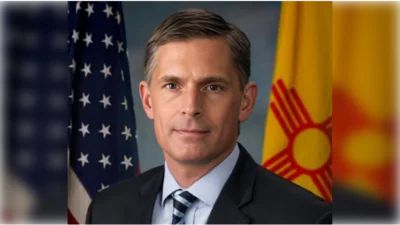WASHINGTON, DC - Energy and Commerce Committee Republican Leader Greg Walden (R-OR) remarks at a Health Subcommittee hearing titled, “Saving Energy: Legislation to Improve Energy Efficiency and Storage."
As Prepared for Delivery
Today’s hearing will allow us to examine policies that seek to save energy, reduce emissions, and ensure electricity reliability while protecting the interests of taxpayers and consumers. We will consider six bills that address two important energy policy areas for the committee - energy efficiency programs and energy storage technologies.
As we know from our experience moving legislation on this panel, the most effective measures build on past bipartisan approaches and take reasonable steps to advance innovation and energy savings. Our responsibility today is to review the measures carefully to identify the policies that will ensure meaningful, effective reforms.
For this reason, I am pleased that Undersecretary for Energy Mark Menezes, is here to provide the Department of Energy’s perspective and suggestions. Most of the bills under consideration today involve DOE directly or will be reliant upon DOE resources and information. And it is DOE’s resources and information, its technical capabilities, that help support the acceleration of innovation across the energy landscape. So, undersecretary Menezes, welcome back to the Committee.
One of today’s bills amends the Public Utility Regulatory Policies Act of 1978, known as PURPA, to require state electricity regulators to consider investments in energy storage systems as part of the resource planning process. While these “states-must-consider" provisions are voluntary, we must be careful not to add to the regulatory burden without adequate justification.
As we review these bills, I will be interested to hear from DOE to understand what they are currently doing in this space, and what additional authorities, if any, would help further their mission and priorities.
Take energy storage for example. These technologies promise to enable more reliable and flexible electricity systems. Improvements in these technologies may increase the viability of alternate energy sources, such as wind and solar. They also promise to provide the tools for utilities to respond to the growth of intermittent renewable generation, to protect the grid from power disruptions, and to lower congestion on the transmission system, which can in return lower electricity rates for consumers.
My home state of Oregon has been ahead of the curve when it comes to recognizing the benefits of energy storage as many of our electric utilities are integrating energy storage projects. In Richland, Washington, across the river from my district, the Pacific Northwest National Laboratory, is among the DOE facilities that are working to advance and develop energy storage technologies and analytical tools for grid-scale deployment.
As DOE develops new tools and assists development of new power electronics, polices that pave the way for deployment should be examined. Fortunately, the electric industry, particularly investor owned utilities, have been increasing capital expenditures by tens of billions of dollars to upgrade grid and transmission infrastructure, which will help harness the benefits of DOE’s work.
Yet, some portions of the electric sector do not have the resources to invest in innovative new technologies. The bipartisan bill by Mr. O’Halloran and Mr. Mullin aims to provide targeted DOE technical assistance and grants to rural electric cooperatives and non-profits to help share DOE knowhow. This is the kind of legislation that deserves our attention.
On the energy efficiency front, several measures today would help to reduce emissions and save taxpayer expenditures over the long term. For example, authorizing in statute DOE’s Federal Energy Management Program, as proposed in a measure by Mr. Welch and Mr. Kinzinger, would build upon reforms considered in previous Committee work to expand public private partnerships in federal facilities.
This is the kind of policy, grounded in innovation, not regulation, that offers the surest path to more efficient use of energy. Provisions in the bill by Mr. Welch and Mr. McKinley would also improve federal and industrial energy efficiency and seek to accelerate innovations in buildings.
When it comes to ways to save energy and improve the performance of the homes where we live and the buildings where we work, we should aim for solutions that are affordable, cost-effective, and appealing to consumers. With a careful balance of incentives and market-driven policies, consumers will choose the products and services that work best for them.
We should support the development and deployment of new technologies that use less energy, but we need free markets and consumer choice to drive that innovation. We should avoid mandates that stifle growth and make homes and buildings more expensive. I firmly believe we can find common ground with solutions that are focused on affordability, cost-effectiveness, and as always, consumers.
I look forward to hearing from DOE and the witnesses on the second panel to explore these issues to ensure our legislative efforts will work for energy security, energy savings, and for the American consumer.




